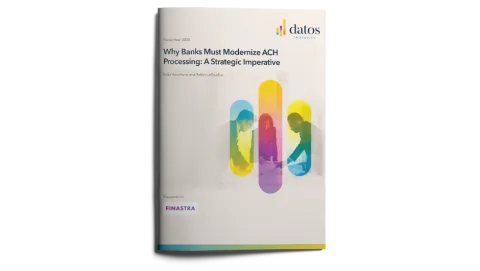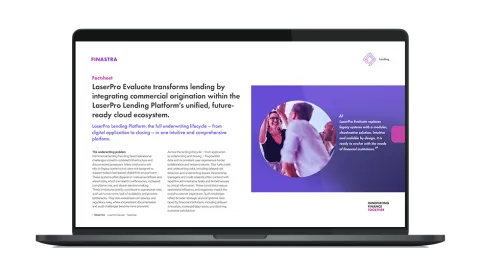Why banks must modernize ACH processing: A strategic imperative
Rising ACH transaction volumes and evolving customer expectations are making legacy ACH systems increasingly inadequate for modern banking needs. Modernization is a strategic imperative, offering benefits such as real-time processing, enhanced security, and competitive differentiation.

Default Finastra
This new report from Datos explores why ACH processing modernization has shifted from a long-term consideration to an urgent priority for financial institutions. ACH remains a critical payment rail in the U.S., but legacy systems—often 20 to 40 years old—struggle to handle growing volumes, same-day processing requirements, and integration with real-time payment networks like RTP and FedNow.
These limitations create operational risks, increase costs, and hinder banks’ ability to meet customer expectations for speed, transparency, and digital experiences.
The report details the advantages of modern ACH platforms built on cloud-native architectures and microservices. These solutions enable real-time data access, API-driven integration, and advanced fraud prevention through machine learning, while reducing technical debt and operational complexity. Banks that modernize can improve straight-through processing rates, accelerate time-to-market for new services, and offer value-added capabilities such as payment analytics and automated reconciliation.
Key areas considered by the report:
- the challenges placed on legacy systems by growing ACH volumes
- the need for enhanced security and fraud protection
- meeting growing customer expectations and maintaining competitive advantage
- modernization as a future-proofing strategy
- the importance of choosing the right vendor partner


